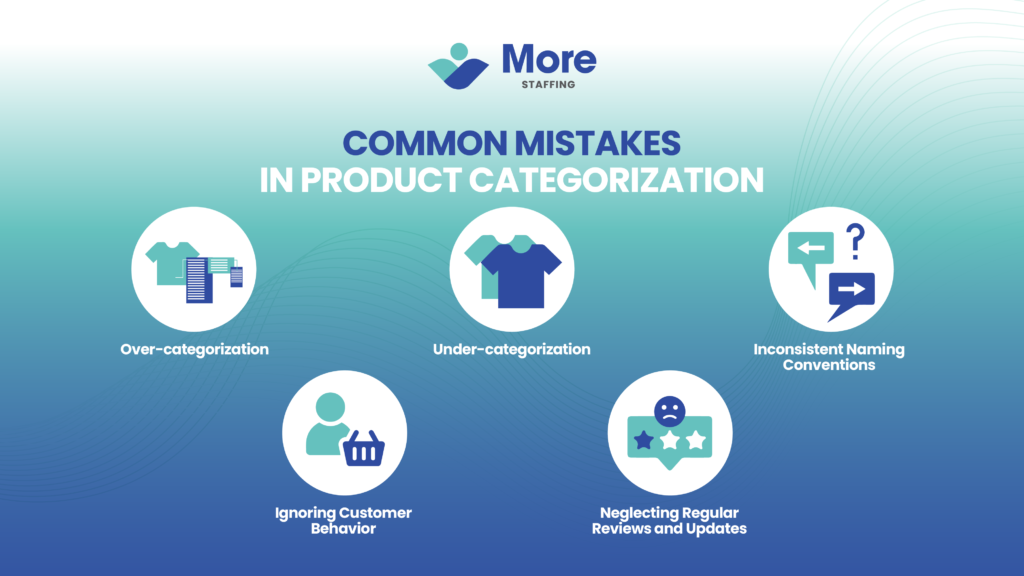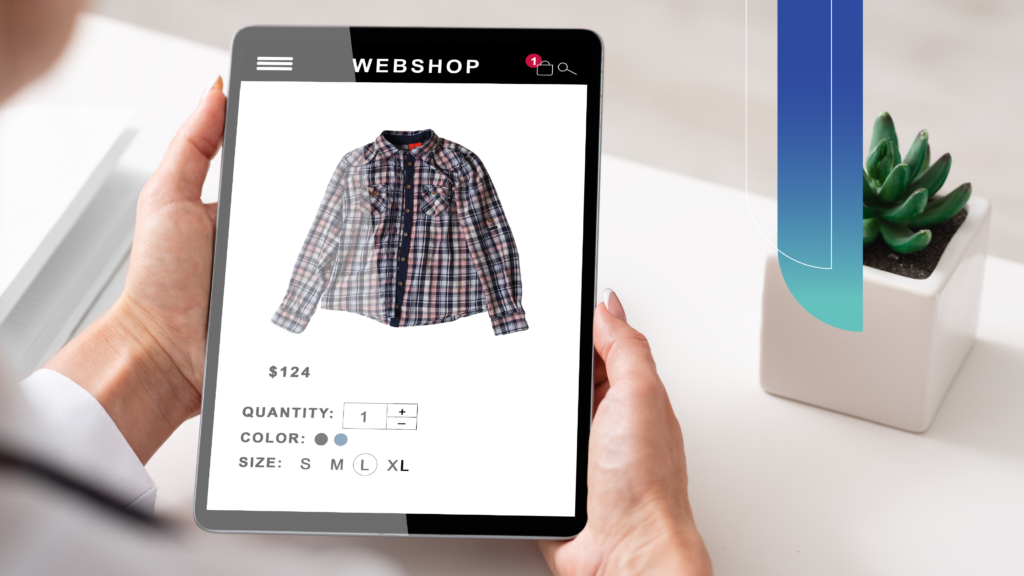Struggling with product categorization? You’re not alone—many businesses face challenges when organizing their products on the front end and behind the scenes. Effective product categorization is essential for more than just enhancing the customer experience and driving sales. It is also crucial in streamlining supply chain operations and warehouse management.
In this article, we’ll dive into the retail side of product categorization’s most common mistakes and how to avoid them. You’ll also learn how to design intuitive categories that connect with your customers while improving operational efficiency across your e-commerce and supply chain systems, ultimately boosting conversion rates. By the end, you’ll have practical tools to optimize your product hierarchy and unlock the full potential of your catalog. Let’s get started.
Importance of Product Categorization

Product categorization is vital for any successful e-commerce or retail business. It impacts nearly every aspect of your operations, from inventory management to customer satisfaction and sales performance.
Let’s first look at how effective categorization streamlines inventory management, providing better control and organization.
Role of Product Categorization
Effective product categorization is a cornerstone of business success. Discover how it enhances inventory management, elevates customer experience, and drives sales.
- Inventory Management
Effective product categorization is essential for streamlining your inventory management processes. By grouping similar items, you can:
- Track stock levels more efficiently
- Identify slow-moving products more easily
- Optimize warehouse organization and picking processes
Organizing your inventory more effectively reduces errors and improves overall operational efficiency. However, categorization doesn’t just affect your internal processes—it also plays a major role in shaping the customer experience.
Next, let’s discuss how well-structured product categories can improve customers’ shopping and interaction with your store.
- Customer Experience
Well-organized product categories significantly enhance the customer shopping experience. When you implement thoughtful product categorization:
- Customers can find desired items quickly and easily
- Navigation through your website or store becomes more intuitive
- Shoppers discover related products they might be interested in
Note: When customers can easily browse and discover related products, they’re more likely to feel satisfied with their experience, which increases the chances of repeat business.
However, effective categorization doesn’t just improve customer satisfaction—it can also significantly impact your bottom line. Here’s how strategic product categorization can directly boost your sales performance.
- Sales Optimization
Strategic product categorization can have a substantial impact on your sales performance. Here’s how:
- Cross-selling opportunities increase as related products are grouped together
- Upselling becomes easier when premium products are distinguished
- Seasonal or promotional items can be highlighted more effectively
Tracking product performance based on different organizational strategies can yield valuable insights into customer behavior and preferences. This data can refine your product assortment, optimize your store layout, and create more targeted marketing campaigns.
For example, suppose you notice that products in a particular category consistently outperform others. In that case, consider expanding your inventory in that area or creating a dedicated section to highlight them.
Common Mistakes in Product Categorization

Many businesses need help with product classification, a critical element of e-commerce success. By recognizing common pitfalls, you can create a more effective categorization system. Here are some of the most typical errors and their consequences.
Over-Categorization
One of the most prevalent mistakes in product categorization is creating too many categories. While it may seem logical to offer numerous options, over-categorization can overwhelm customers. This “paradox of choice” often leads to decision paralysis, causing potential buyers to abandon their search.
For example, a clothing store might create separate categories for “summer dresses,” “beach dresses,” and “sundresses.” This level of specificity can confuse shoppers who may not understand the subtle differences between these categories.
Under-Categorization
On the flip side, under-categorization can be equally problematic. Customers struggle to find what they want when products are lumped into broad, catch-all categories. This frustration can result in lost sales and decreased customer satisfaction.
Imagine an electronics store with a single category for “computers.” This would force customers to sift through laptops, desktops, tablets, and accessories all in one place, making their search unnecessarily time-consuming and challenging.
Inconsistent Naming Conventions
Another common mistake is using inconsistent naming conventions across categories. This can create confusion and make it easier for customers to navigate your product hierarchy. Consistency in language and structure is key to a user-friendly categorization system.
For instance, using “Men’s Apparel” in one section and “Women’s Clothes” in another introduces unnecessary variation that can disorient shoppers.
Ignoring Customer Behavior
Many businesses categorize products solely based on internal logic without considering how customers actually search for and find items. This disconnect can lead to a categorization system that makes sense to the company but is counterintuitive for users.
Analyzing search data, customer feedback, and browsing patterns can provide valuable insights into how your audience thinks about and looks for products.
Neglecting Regular Reviews and Updates
Product categorization isn’t a “set it and forget it” task. Failing to review and update your category structure regularly can result in an outdated system that doesn’t reflect current product offerings or customer needs.
Your categorization should adapt as your inventory evolves and market trends change. Regular audits can help ensure your system remains relevant and practical.

How to Avoid These Mistakes
Now that we’ve identified common product categorization pitfalls, let’s focus on prevention. This section will look at practical strategies to avoid these errors, helping you create a more effective and user-friendly system. These techniques will enhance customers’ shopping experience and improve your e-commerce performance.
Implement a Clear and Consistent Strategy
Establish a well-defined strategy to ensure clarity and consistency in your product categorization. Begin by mapping out your product hierarchy, considering broad categories and specific subcategories.
Ensure that your categorization logic remains consistent across all product lines. This approach will make it easier for customers to navigate your site and find what they want quickly.
Utilize Customer Data and Feedback
Your customers are a valuable source of information for improving your product categorization. Analyze user behavior data to understand how shoppers interact with your current categories. Pay attention to search queries, click-through rates, and conversion data.
Additionally, actively seek customer feedback through surveys or user testing sessions. This insight will help refine your categories to align with customer expectations and shopping habits.
Regularly Review and Update Categories

Product categorization isn’t a set-it-and-forget-it task. Your categories should adapt as your inventory evolves and market trends change. Schedule regular reviews of your product categorization structure, ideally every quarter. During these reviews, assess the relevance of existing categories, identify gaps, and make necessary adjustments to keep your process fresh and effective.
Train Your Team
Ensure that everyone involved in product management and categorization is on the same page. Develop comprehensive guidelines and conduct training sessions to educate your team on best practices. This will help maintain consistency across your product catalog, even as different team members contribute to the categorization process. Regular refresher courses can also keep everyone updated on any changes or improvements to your strategy.
Maximize Technology and Tools
Leverage technology to streamline and enhance your product categorization efforts. Invest in robust product information management (PIM) systems that can help automate and standardize your categorization process. Additionally, consider using AI-powered tools to analyze product attributes and suggest appropriate categories. These technologies can significantly reduce human error and improve the overall efficiency of your categorization workflow.
Conclusion
As you refine your product categorization strategy, remember to avoid key mistakes and implement best practices that benefit your supply chain and online store.
Clear, consistent categories backed by data-driven insights and regular updates will enhance the customer experience and improve backend operations, leading to increased sales. However, optimizing your categorization and overall operations often requires the right team. That’s where More Staffing comes in. We specialize in providing top talent for e-commerce and supply chain businesses, helping you build skilled remote teams to handle everything from product categorization to inventory control.
Ready to organize your operations efficiently? Contact More Staffing today to find the ideal candidates for your remote team and streamline your e-commerce business.



